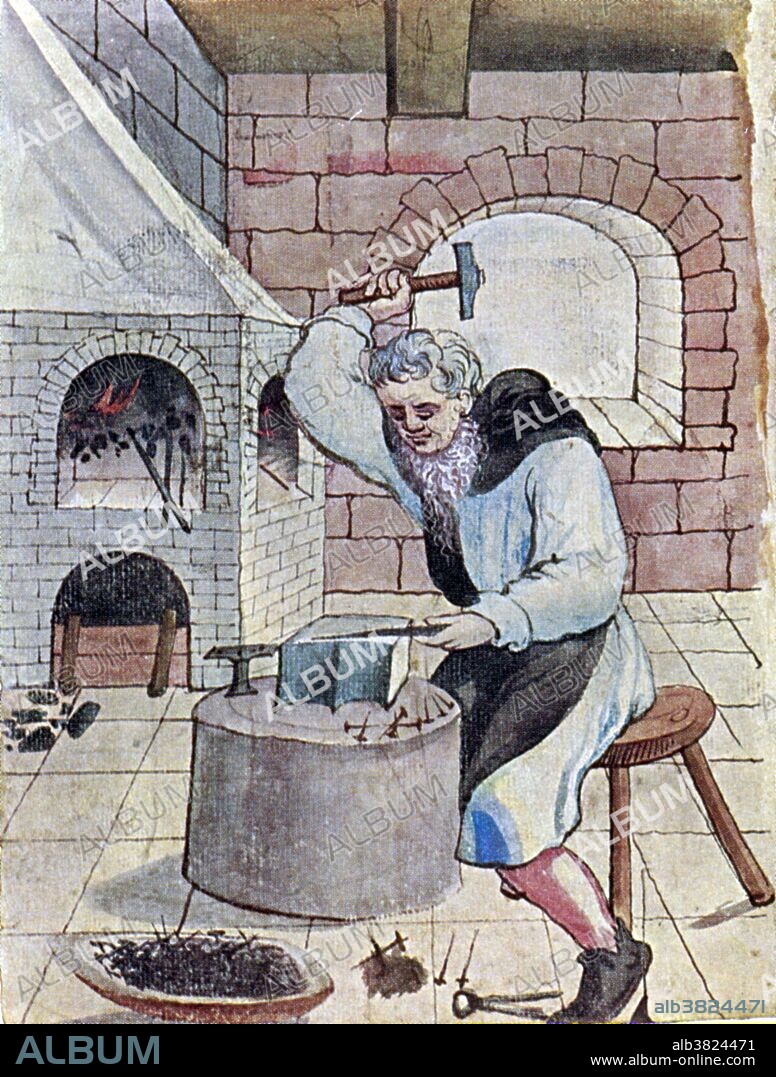alb3824471
Nailsmith, 1529

|
Ajouter à une autre Lightbox |
|
Ajouter à une autre Lightbox |



Avez-vous déjà un compte? S'identifier
Vous n'avez pas de compte ? S'inscrire
Acheter cette image.
Sélectionnez l'usage:

Titre:
Nailsmith, 1529
Légende:
Voir la traduction automatique
Nails go back to the Ancient Roman period. The provision of iron for nails by King David for Solomon's Temple is mentioned in the Bible. Until the end of the 18th century, they were made by hand, and were provided by an artisan known as a nailer. Until the early 17th century there were workmen called Slitters who cut up iron bars to a suitable size for nailers to work on, but in 1590 the slitting mill was introduced to England, providing a mechanical means of producing rods of uniform cross-section. In the 19th century, after the invention of machines to make "cut nails", some nails continued to be made by hand, but the handmade nail industry gradually declined and was largely extinct by the end of that century.
Crédit:
Album / Science Source / New York Public Library
Autorisations:
Modèle: Non - Propriété: Non
Questions sur les droits?
Questions sur les droits?
Taille de l'image:
2891 x 3815 px | 31.6 MB
Taille d'impression:
24.5 x 32.3 cm | 9.6 x 12.7 in (300 dpi)
Mots clés:
16E SIECLE • 16EME S • ASSOCIATION • ATELIER • CLOUTIER • COMMERCANT • COMMERCE FORGERON • CONFRERIE • CONFRERIES • CORPORATION • CORPS DE METIER • ENCLUME • FORGERON • FRATERNITE • GUILDE • ILLUSTRATION • MARTEAU • MARTEAUX • METIER: FORGERON • OCCUPATION • PROFESSION FORGERON • PROFESSION • SEIZIÈME SIÈCLE • XVIE SIECLE
 Pinterest
Pinterest Twitter
Twitter Facebook
Facebook Copier le lien
Copier le lien Email
Email
